Citation:
Guo, Y. ; Zhao, D. *. New Perylenediimide Polymer Acceptor Design and Their Applications to All-Polymer Solar Cells (苝二酰亚胺聚合物受体设计及在全聚合物太阳能电池中的应用). Acta Polym. Sin. 2018, 2, 174-185.
摘要:
Bulk-heterojunction (BHJ) polymer solar cells (PSCs) have attracted attention over the past decades due to their distinct advantages of low cost, light weight, and the suitability for flexible-device fabrications. Despite the remarkable success in improving the efficiency of PSCs, fullerene-based acceptors have shown evident limitations. Accordingly, increased research efforts have been invested in developing non-fullerene acceptors, and great development has been witnessed in this field in recent years. Among all different kinds of BHJ PSCs, all polymer solar cells (all-PSCs) potentially possess the most stable donor-acceptor phase separation morphology, and all-polymer films are expected to boast superior mechanical properties. Yet, the bottle neck of enhancing the power conversion efficiency (PCE) of all-PSCs currently lies in the performance of the polymer acceptors. In the past years, we have been focusing on designing new polymer acceptors using perylenediimide (PDI) as the main building block and studing their performance in all-PSCs. A series of PDI-based polymer acceptors have been synthesized and studied since 2013. Due to the steric hindrance induced by the bay-region substitution, the PDI polymers mostly manifest low crystallinity. Accordingly, by enhancing the conjugation and rigidity of the polymer backbone, and thereby improving the aggregation and crystallization ability of the polymers, increased PCE has been achieved with all-PSC devices. Consistently, experimental evidence has also been collected showing improved morphology of the active layer. As a result of the continued and systematic studies on designing and synthesizing new polymer acceptors, along with the optimization of device fabrication conditions, the best PCE of all-PSC incorporating a PDI polymer acceptor has now been boosted to 8.59%. Very similar PCE values can be obtained from devices fabricated under ambient conditions, proving the high chemo-stability of the active-layer materials. The synthetic methods of these PDI-based polmers and the device fabrication conditions are much more convenient and economical. All these properties are friendly to the large-scale material preparation and device production. 二元或多元聚合物组成的本体异质结具备高度稳定的微相分离形貌,带来潜在的器件寿命和稳定性方面的巨大优势,全聚合物活性层器件因而成为有机太阳能电池的重要发展方向和研究内容.本文系统介绍近年来苝二酰亚胺类聚合物受体的研究进展,以及将这类聚合物受体应用于全聚合物太阳能电池所取得的重要成果.通过多种不同共聚单元结构的设计和筛选、主链和侧链化学结构的调控和优化,获得了一系列性能优越的苝二酰亚胺聚合物受体,这些材料的运用大幅度地提升了全聚合物太阳能电池的能量转化效率.相关的研究数据和结果也为后续酰亚胺类聚合物受体的设计开发、全聚合物本体异质结活性层的形貌特征和光电转化机制的分析和研究,以及全聚合物太阳能电池器件性能的优化和提升提供了良好的实验基础.See also: 2018
